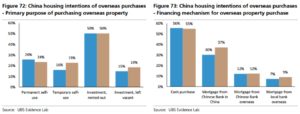Recently the APRA and ASIC implemented new measures to try to slow the growing Australian property market. For some years now, the Australian property market has been on an upward growth cycle, leaving many to wonder when will it bust?
What are the lastest APRA and ASIC changes?
This latest crackdown by regulators is targeted towards residential lending. With the APRA moving to limit the mix of interest only lending to 30% of total new residential mortgage lending. A reduction from the approx. 40% it was prior. The regulator has also stipulated that banks are to adhere to strict internal limits on the volume of interest only loans, with Loan-To-Value Ratios (LVR) above 80%.
ASIC this past week also announced it will target lenders and brokers pushing customers into riskier, more expensive interest only loans. Additionally, ASIC have again noted that they are looking at lenders using underestimates of living expenses when calculating serviceability of loans for their customers.
What’s the concern?
Regulators continue to remain concerned about the growth of the property market in areas such as Sydney, Melbourne and Brisbane. These are just three of the country’s hot spots at present. According to Credit Suisse, foreign buyers are absorbing around 25% of new supply in NSW and 16 in Victoria. Part of this result is due to the substantial increase in property prices in buyer home countries.
Delving deeper into the source of investment, we discover a large proportion of new buyers are foreigners. These investors are not sourcing funds from local banks or lending institutions. A recent UBS survey of Chinese property buyers found that less than 10% intended to finance their property purchase through a local (Australian) bank. This may go on to suggest that regulatory restrictions on investor loans will likely have little impact on the people buying a large majority of our property.

At present Chinese property investors have swamped our market; however one of the more interesting facts is that most investors do not intend to permanently reside in the overseas properties they buy. Looking at the chart above we can see that around 25% intend to permanently reside in the overseas properties being purchased whilst the remainder are to be used for investment purposes only. The issue the market now faces is that if property prices fall prior to settlement we could be faced with the issue of these investors reneging on their contracts, losing their 10% deposits but not be left with a settlement price below what was expected. Although this may be the worst possible scenario it is one which cannot be ignored. If this scenario were to play out it could initiate a vicious cycle of falling property prices and settlement defaults. This would lead the Australian economy to bear the brunt of the losses.
If you would like to speak to one of our advisers please feel free to contact our office.

(P) (07) 3284 7875 | (F) (07) 3284 4790

